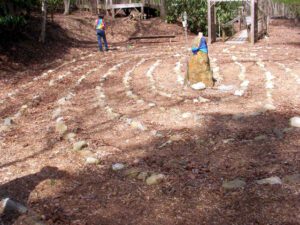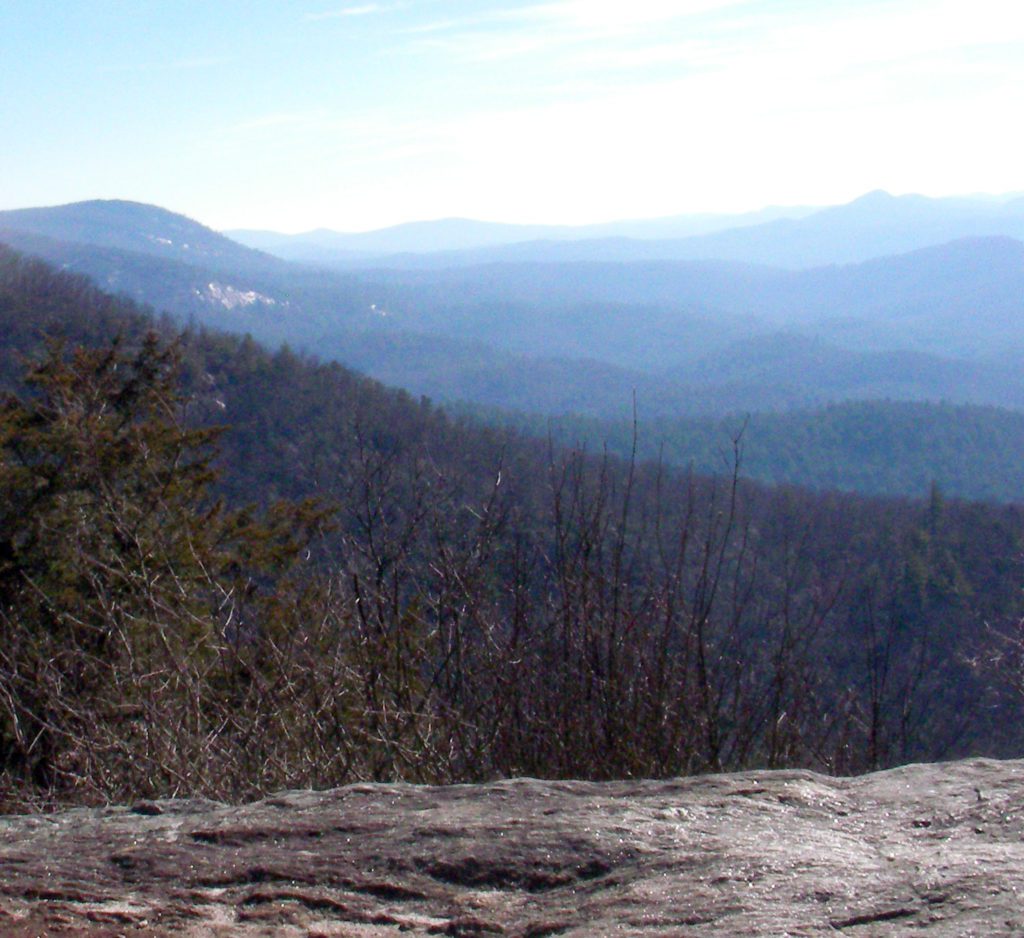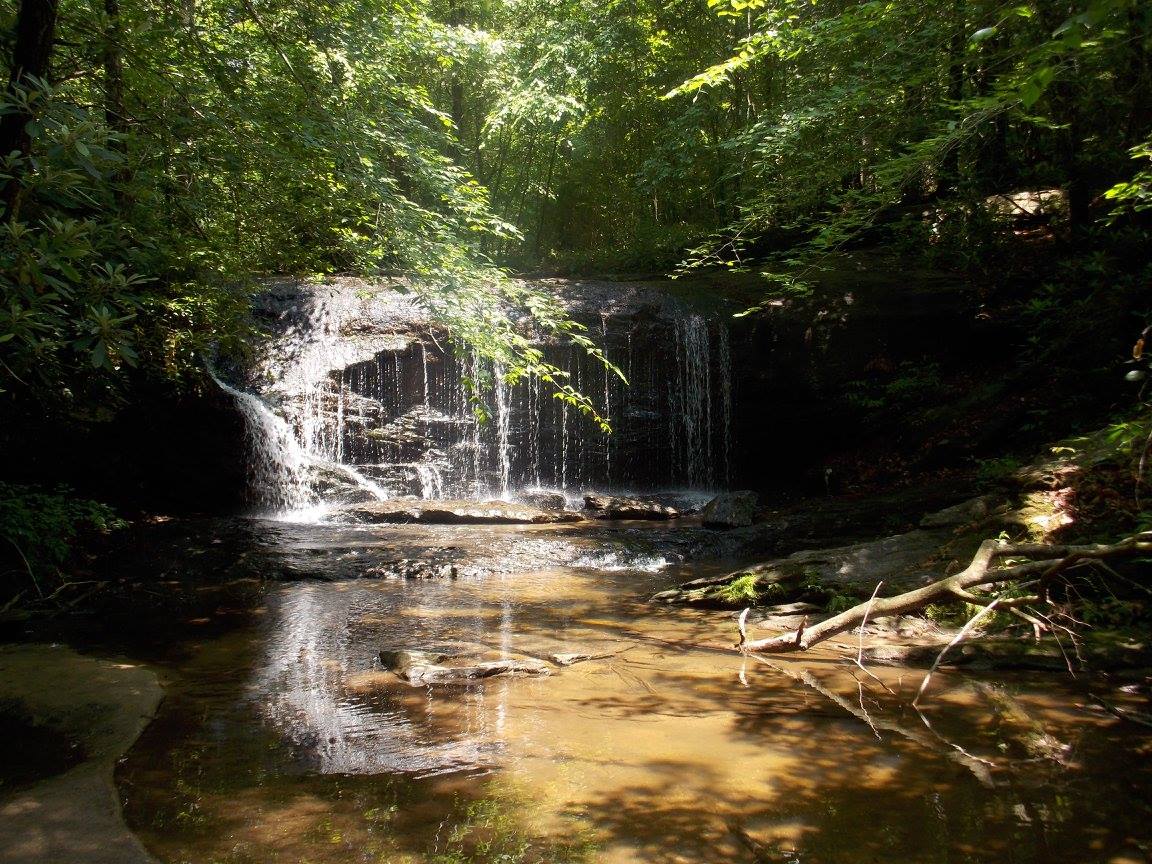Our ancestors knew hundreds of
medicinal uses of local plants and herbs. They knew the seasons, when to plant,
when to harvest, how to forecast the weather by the behavior of plants and
animals, and a host of other things based on their observations of nature. The
lessons our ancestors learned haven’t gone away. They’re still there, waiting
in the forest like an open book. All we have to do is to learn how to read it.
9.0 Forest as Teacher
Before the advent of the written word, our ancestors had no books from which to learn; no sacred texts from which to grow their spirituality, and no written history of their peoples. Nature was their sacred text. They studied the forest in the way that we study books today.
Think about applying the mindful skill of focusing on one thing at a time to your studies of nature. Can you see the day-to-day changes in the trees as they grow through the seasons? What could you learn about the medicinal properties of the trees by paying close attention to them? What can you learn about the qualities of each tree by studying it? Do different trees have different personalities? What can you learn about your own personality by studying the trees?
Optional Activity: Experiencing the Forest

(For each session there will be optional exercises that you may do on your own, or under the guidance of a facilitator if you are taking this course as part of a workshop. They will be included in these insert boxes in the materials for each session)
If you have the opportunity to access a forest or wilderness area, try this exercise.
Go out into the forest. If possible, get far enough away from civilization that you can experience the forest without the sounds of mechanical devices like automobile engines, cell phones, etc.
Find a comfortable place to sit, and close your eyes. Pay attention to what your other senses are telling you about the forest. What do you hear? What do you smell? Can you feel the breeze on your skin? Is there a taste to the air as you exhale?
Practice observing and describing in this manner for a time.
Did this activity change your experience of the forest?
How?
9.1 Animal as Teacher
If you look at the myths, legends and stories of indigenous peoples, you won’t have to look far to find that animals are used quite often as teaching tools. Remember Aesop’s Fables? Most of those parables involved animals. Likewise, many of our fairy tales, from Goldilocks and the Three Bears to the Three Little Pigs, involve animals.
You don’t have to be a shaman in order to use animals as teaching tools. You already have within you volumes of knowledge on animals and their characteristics. You can draw on these traits to create your own personal stories and legends.
The My Own Animal Legend exercise on the
next pages is a way to use the knowledge within you as a way to teach others
and yourself. To complete this exercise, first answer the questions provided,
then go on to the next page to use that information to create your own Animal
Legend. Don’t worry too much about being elaborate in your creativity. If the
story comes from your own heart, it will be a good one.
My Own Animal Legend
We’re going to create a story about animals. These animals will be metaphorical for people you know, or people you’d like to know. First, answer the questions below in your notebook or journal. We’ll use this information to create your Animal Legend.
If you were an animal, what sort of animal would you be?
Why did you choose this animal?
Think of some people you’d like to include in your Animal Legend. They can either be real or imagined people, living or dead. Think of them as animals, and list them below. You don’t have to use all the spaces provided. Just include enough characters for your story to be interesting to you. Make two columns. In one, list the person, and in the other, list the animal representing this person.
For each animal listed above, describe what they are doing in the story. Write these descriptions in your journal.
The animal representing you is looking for something. What is he/she looking for?
Describe the place in which these animals live.
The animal represented by you is going on a journey to find the thing they are looking for. Where is it that you are going?
Something (or someone…possibly one of the animals from the story) is trying to prevent you from reaching your goal. Who or what is it? Why are they trying to keep you from your goal?
There are many trials on your journey, but you finally manage to reach your destination. What happens when you get there?
Once you’ve reached your destination and achieved your goal, you have to return home. What happens on the trip home?
During this journey, you encounter the other animals from above. What are they doing? Are they helping or hindering you on your journey? Why?
Which animal(s) are helping you on your journey? Why?
Which animal(s) are hindering you on your journey? Why?
You’ve finally arrived home again. What happens when you get there?
What will be the moral of your story?
Now write your story out, based on the information provided above. In first blank on the next section, write the name of the animal that represents you in the story.
Once upon a time, there was a ____________________ who…
Now go on to write your story.
DON’T GO ON TO THE NEXT SECTION UNTIL YOU’VE FINISHED YOUR STORY!

Lessons from My Own Animal Legend
Was this story difficult for you to write, or was it easy? Why?
Let’s look at your story again. If you didn’t complete it yet, go back and do so before continuing.
Now that you’ve finished your story, answer the questions below about it in the space provided.
The thing you were looking for in your story is a metaphor for the thing you most need in your life right now. Think about the qualities of the thing you were seeking. What does it symbolize? Why are you looking for it? What is your intention in finding it? Write your answers in your journal.
The place in which the animals live represents the place where you are right now in your life. Describe your thoughts and feelings on where you live right now. For example, if you said that your animals live in a desert, think about the emotional qualities you associate with a desert, and not its physical qualities. Such answers might include: Lonely, barren, foreboding, etc. If you like deserts, your emotional qualities for this setting might include: Peaceful, quiet, and undisturbed. Write your answers in your journal.
The place you are going on your journey represents where you would like to be in your life. Describe this place in your journal, again focusing on the emotional qualities you associate with this place.
Think about the animal(s) that tried to prevent you from reaching your goal. This animal represents the barriers to connecting with your True Self. What qualities does this animal possess? How are these qualities keeping you from connecting to who you really are?
Examine what happened to you in your story once you reached your destination. Did you achieve your goal? If you did, describe what happened to the animal representing you when you reached your goal. Use feeling words. If you reached your goal, then this attainment represents what you imagine you will achieve when you connect with your True Self:
If you didn’t achieve your goal in the story, what was the reason? Did the animal who was working against you prevent you from achieving it, or did something else happen? Whatever prevented you from achieving your goal represents your own fears of living in your True Self. Describe these fears below. Use feeling words like sad, empty, frustrated, etc. Write your answers in your journal.
Look at what happens in your story when you return home. This represents how you would see your life changing if you were living every day in your True Self. Is it a positive change, or a negative change? If bad things happen in the story when you return home, what would that tell you about your own fears of living in True Self? Describe your thoughts in your journal, using feeling (emotion) words.
Did any animals help you on your journey? If so, what are the characteristics of these animals? These helper animals represent the positive qualities you see in yourself. Write these characteristics in your journal.
Did any of the animals hinder you on your journey? These animals represent the barriers to connecting with your True Self. They represent the reasons you see within yourself for not living in True Self. How did these animals hinder you? What could you do to befriend these animals within you so that they no longer hinder you on your journey?
What was the moral of your story? This represents the lesson you most need to learn in your life right now in order to “get out of your own way” and live fully in your True Self. Describe your thoughts and feelings on this in your journal.
What did you learn about yourself from this journey? Write any reflections or observations in your journal.
9.3 Nature as Teacher
The Animal Legend exercise is an opportunity to allow nature to teach us. It is also an opportunity for us to draw the archetypal energy of various animals into our lives as aids to connection. When I have done this session in workshops in the past, we have occasionally acted out the stories people have written. This has been especially enjoyable when people were able to wear the masks they created in the Faces and Masks exercise during the performance.
The techniques applied in the Animal Legend exercise may also be used in other aspects of our lives as we learn from nature. Imagine coming upon a stream while walking in the woods. A practitioner of Mindfulness-Based Ecotherapy sees the stream and studies its every aspect. How am I like the stream? How am I different? How may its energy be tapped? Why does it reflect the light of the moon? What is its substance? What is the nature of its life force? Is there an Art of Water? How do people feel about the different faces this stream presents? These are just some of the questions one might ask when observing and connecting with a stream.
The basic lesson of Nature as Teacher is to keep an open mind about anything you are studying so that you do not allow your preconceptions to cloud what is really there. This is not as easy as it sounds, but it can be accomplished. As with all things, the skill will grow with practice and patience. The key to this is to try to see all sides of a problem before looking for an answer.
With nature as your teacher, always strive to find the truth about your universe, and not merely what you wish to see or what your senses tell you. Remember that anything you will ever learn has been filtered through the sieve of your senses. What your body can perceive is but a small fraction of what is really there. The real nature of the Universe is deeper and more mysterious than we can ever know, at least in this present form. But that does not mean that we should stop trying. Your own inner universe is forever limited to the boundaries of your senses, but because of this, you also have the ability to create your own universe. That is the true nature of Mindfulness-Based Ecotherapy: The ability to see the world as it really is, free of expectations or assumptions, and to create your own world by changing your beliefs and assumptions.


